RDI RDI, or Reference Daily Intake, is very similar to the DRV The key difference, however, is that Daily Reference Value refers to nutrients the average person eats on a meal to meal basis, like sodium and carbsOct 21, 17 · Answer The RDAs (Recommended Dietary Allowances) for vitamins and minerals are set by the set by the Institute of Medicine (IOM) of the National Academy of Sciences and for each nutrient, may vary depending on age, gender, and for women who are pregnant or lactating The RDAs do not typically appear on food and supplement labels The DVs (Daily Values) are set byDec 10, 03 · The DRI values differ from those used in nutrition labeling on food and dietary supplement products in the US and Canada, which uses Reference Daily Intakes (RDIs) and Daily Values (%DV) which were based on outdated RDAs from 1968 but were updated as of 16
Plos One Potential Impacts Of Climate Related Decline Of Seafood Harvest On Nutritional Status Of Coastal First Nations In British Columbia Canada
Dri vs rda
Dri vs rda-Start studying DRI, RDA, AI, UL, EAR, DV, and AMDR and their uses Learn vocabulary, terms, and more with flashcards, games, and other study toolsRecommended Dietary Allowance (RDA) The RDA is the average daily dietary intake level that is sufficient to meet the nutrient requirement of nearly all (97 to 98 percent) healthy individuals in a particular lifestage and gender group
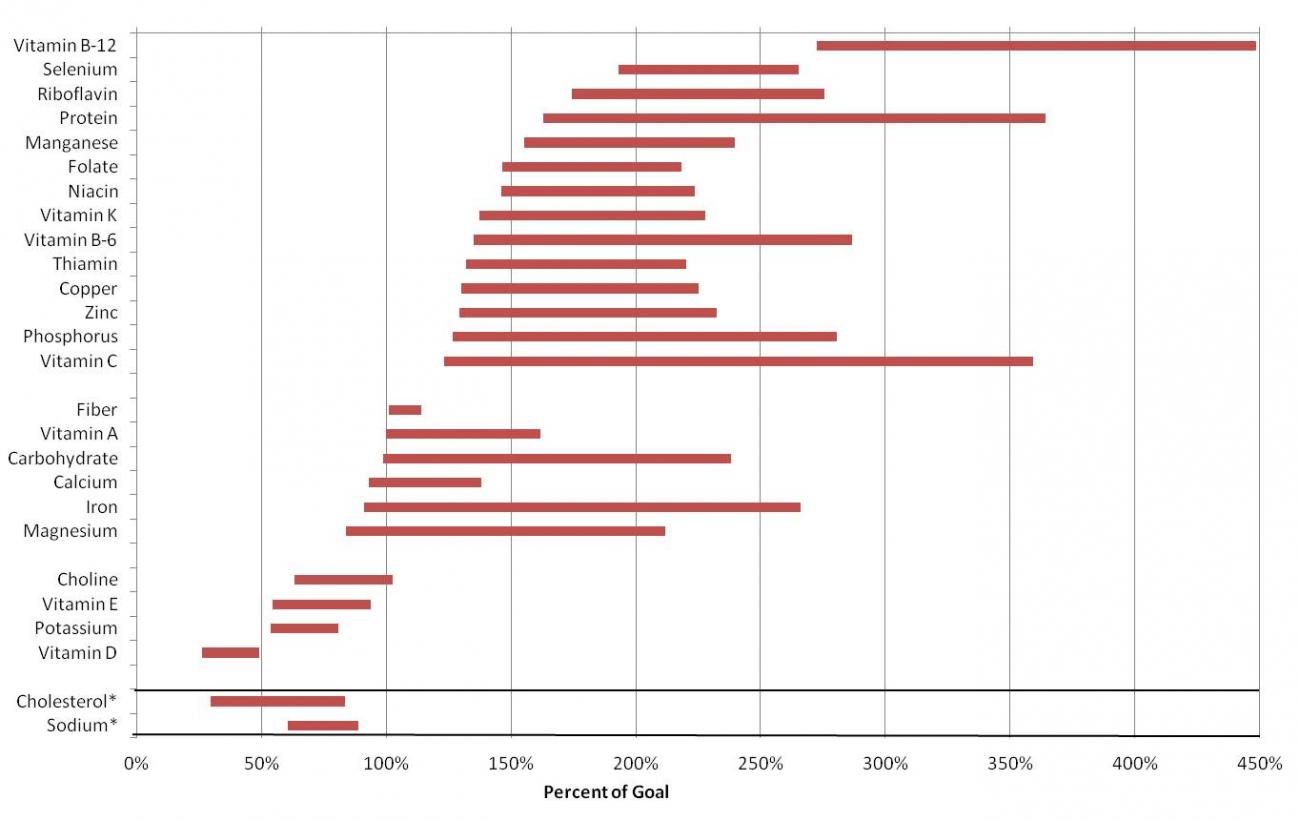



Appendix E 3 1 Health Gov
RDA The RDA (Recommended Dietary Allowance) covers more than 97% of the population Recommended Dietary Allowance (RDA) Recommendation of the Food and Nutrition Board of the United States National Academy of Sciences for nutrient intake levels that it believes will meet the needs of most healthy people in the United States Health and Welfare Canada publishes anVitamin D and Calcium Updated Dietary Reference Intakes The US Institute of Medicine ( IOM) released its report on the review of the Dietary Reference Intakes ( DRI s) for vitamin D and calcium on November 30, 10 The review was jointly commissioned and funded by the US and Canadian governments The decision to commission the IOM reviewRDI, RDA, and DV The Inconvenient Truth In previous emails we carefully explained how to determine the critical differences between "organiccontaining" versus "100% organic";
SidebySide Comparison RDA vs CDA Here is a sidebyside table to compare the professional and educational pathways towards becoming a registered dental assistant and a certified dental assistant Graduate from a one or twoyear CODccredited dental assisting program with a diploma or an associate's degreeDaily Value vs % Daily Value First, let's look at how Daily Value (DV) and Percent Daily Value (%DV) work together DVs are the recommended amounts of nutrients to consume or not to exceedRDA AI UL In 1997 the United States Department of Agriculture (USDA) created a newer and more extensive way of looking at RDA'sThey created the dietary reference intakes (DRI's) which categorizes intakes into four different definitions ATTENTION The amount of food' s nutrients and their % of the daily suggested intake for you, are based on the RDA
Sufficient to meet the nutrient requirements of nearly all (9798 percent) healthy individu als in a group It is calculated from an Estimated Average Requirement (EAR) If sufficient scientific evidence is not available to establish an EAR, and thus calculate an RDA, an AI is usually developedThe number provided under DV is the recommended amount of minerals and vitamins you should ingest from a meal of 00 calories in order to make sure your body is in great health In a number of cases, the DV and RDA are the same The purpose of the DV and the RDA is to make sure that you do not fall under or go above the recommended amount ofThere are currently no snippets from Episode #152 UFC Felder vs RDA and Don't Trade a Leg Kick for a Right Hand Snippets are an easy way to highlight your favorite soundbite from any piece of audio and share with friends, or make a trailer for Pit Master & The Doc




Outline On Scientific Fundamental Nutrition And Health Exam 1 Nutr 10 Docsity
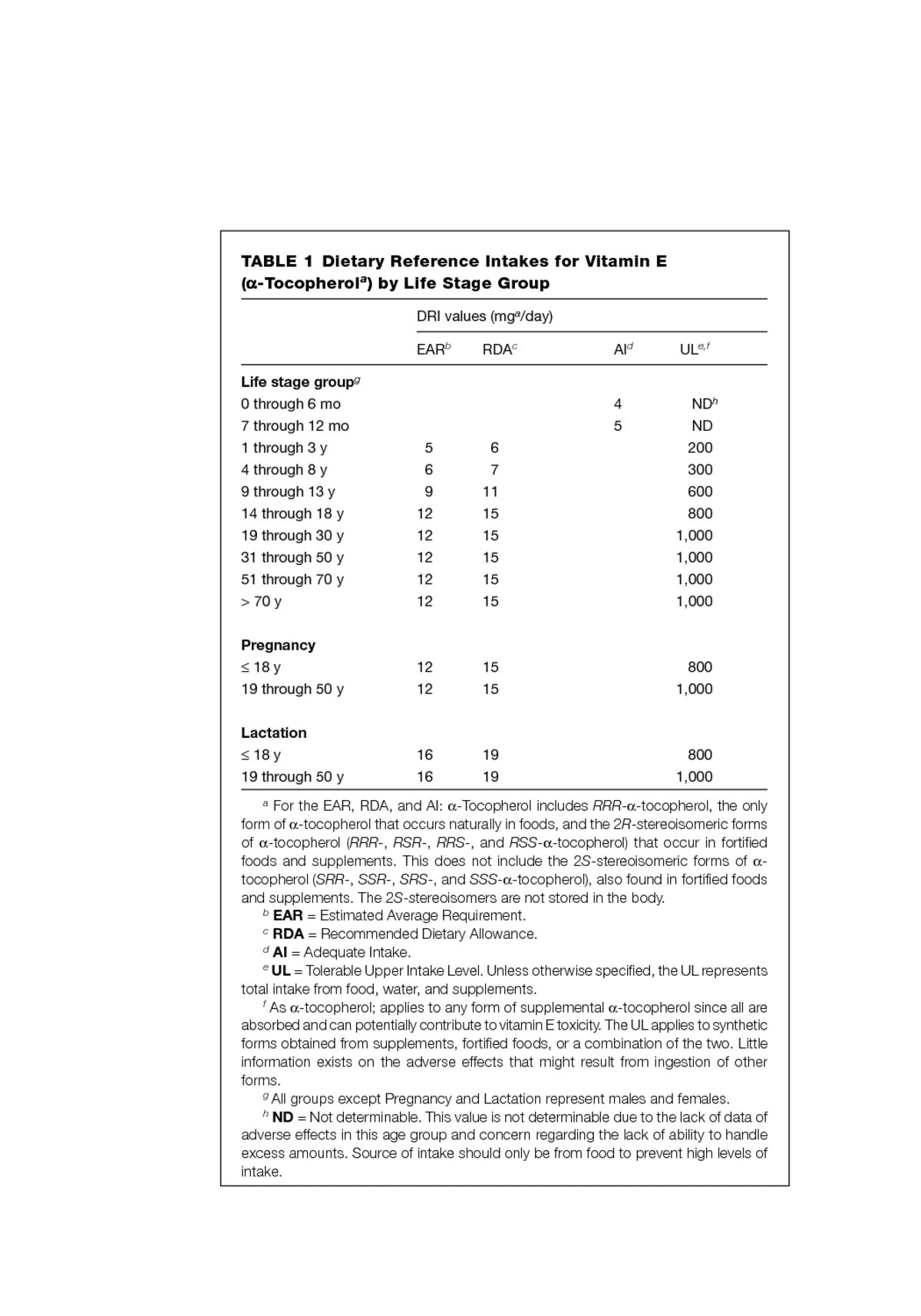



Vitamin E Dietary Reference Intakes The Essential Guide To Nutrient Requirements The National Academies Press
DRI Component Description Estimated Average Requirement (EAR) Reflects the estimated median requirement and is particularly appropriate for applications related to planning and assessing intakes for groups of persons Recommended Dietary Allowance (RDA) Derived from the EAR and intended to cover the requirements for 9798The 16 RDI for folate is based on the RDA of 400 mcg of dietary folate equivalents (DFE) for men and women (Ref 1) The term DFE was introduced by the NAM to take into account theRDI (Reference Daily Intake) is a populationadjusted RDA based on all ages and sex groups of RDA values It is numerically identical to the highest RDA value for any group It was developed for foodlabelling purposes (Note RDA's differ among groups of people, such as men, women, children, the aged, different races, etc )




Skingain Products Immitec Skingain Beauty Booster 1 Jpg Products Immitec Skingain Beauty Booster 2 Jpg Products Immitec Skingain Beauty Booster 3 Jpg Products Immitec Skingain Beauty Booster 4 Jpg Skingain Product Code




Final Hun 3226 Intermed Metab Ii Docsity
An RDA is the average daily dietary intake level;Jun 01, 12 · Because half of us actually need more protein than that average minimum, the USDA Recommended Dietary Allowance for protein – the RDA – includes a buffer and suggests getting 810% of calories from protein At that point, almost everybody (98% in fact) will be getting more than what they need Check out page 4 of this document from theRDA is Recommended Daily Allowance and DRI is Dietary Refence intake which can either be RDA or even AI (Adequate intake)




Solved Its Matching Them To The Correct Definition Or Exa Chegg Com




Dietary Reference Intakes Ppt Download
Dietary Reference Intakes (DRI) The Dietary Reference Intakes (DRI) include two sets of nutrient intake goals for individuals—the Recommended Dietary Allowance (RDA) and Adequate Intake (AI) The RDA reflects the average daily amount of a nutrient considered adequate to meet the needs of most healthy people If thereMar 15, 21 · The RDA is the measure that professionals use to assess the quality of people's diets It is the requirement estimated to meet the needs of 975% of the population But the RDA is calculated using the EAR Therefore, the EAR needs to be set before an RDA can be setThe RDA was last revised in 19, and is rather outdated Parts of it are replaced by the Dietary Reference Intakes (DRI), the most recent dietary guidelines by the Food and Nutrition Board of the Institute of Medicine, National Academy of Sciences, , in a




Lecture 2 Bpk 110 Human Nutrition Current Issues Studocu



Plos One Potential Impacts Of Climate Related Decline Of Seafood Harvest On Nutritional Status Of Coastal First Nations In British Columbia Canada
Even if you eat a healthy, balanced diet, you may find it difficult to get enough calcium if you Dietary calcium is generally safe, but more isn't necessarily better, and excessive calcium doesn't provide extraAnd "foodbased" versus "100% whole food" (see Innate Choice™ Healthy News volume 9 Sep 13,Jan 13, 10 · DRIsinclude several different systems for identifying nutrient levelsthat can be used in planning diets for healthy people and assessingtheir intake RDAs are one type of DRI
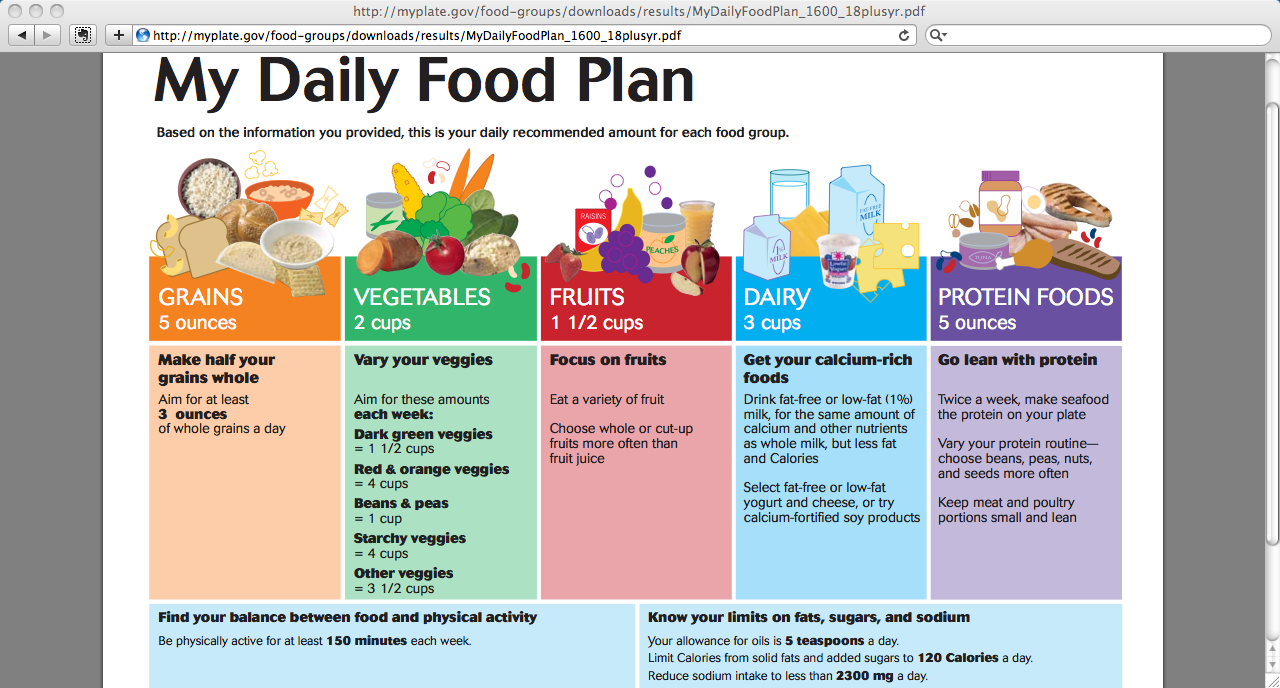



Lecture 2a Chapter 2




Solved Its Matching Them To The Correct Definition Or Exa Chegg Com
Uses of Dietary Reference Intakes for Healthy Individuals and Groups RDA = Recommended Dietary Allowance EAR = Estimated Average Requirement Recommended Dietary Allowance (RDA) the average daily dietary intake level that is sufficient to meet the nutrient requirement of nearly all (97 to 98 percent) healthy individuals in a group Adequate Intake (AI) a value basedDec 17, 18 · The DRI and daily value both provide information about nutrients, but the DRI establishes the guidelines for how much of each nutrient you need, while the daily value tells you how much of theA Dietary Reference Intakes (DRI) The Dietary Reference Intakes (DRI) include two sets of values that serve as goals for nutrient intake—Recommended Dietary Allowances (RDA) and Adequate Intakes (AI) The RDA reflect the average daily amount of a nutrient considered adequate to meet the needs of most healthy people




Pdf Nutrient Intake And Adequacy Of Batswana Elderly Semantic Scholar
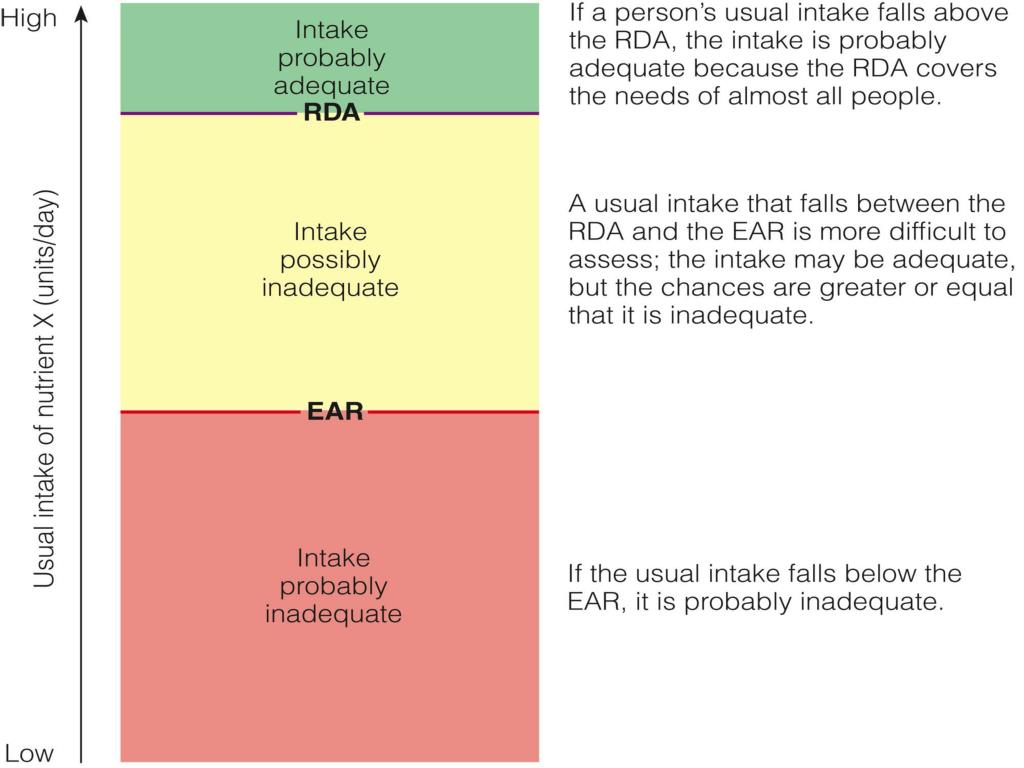



Ppt Standards For Nutrient Intake Powerpoint Presentation Free Download Id
To calculate your recommended dietary allowance, or RDA, for carbohydrates, protein and fats, the first thing you must do is determine your daily caloric needs, based on your body Once that is established, you must determine your individual carbohydrate, protein, and fat needs based on the recommended amounts the body needsThe Recommended Dietary Allowance for men and women is 900 and 700 μg retinol activity equivalents (RAE)/day, respectively The Tolerable Upper Intake Level for adults is set at 3,000 μg/day of preformed vitamin A There are a number of sources of dietary vitamin A Preformed vitamin A is abundant in some animalderived foods, whereasNov 14, · The RDA for vitamin D is 600 international units (15 micrograms) a day for most adults Who should consider calcium supplements?




Gareth Wyn Jones My Animals Graze On Grass Which Is Grown On Land That S Not Suitable To Grow Crops You Ve Not Thought About This Sustainable Way To Produce




Publications Digital Repository Ireland
Often used to plan nutritionally adequate diets forOct 12, 14 · Dietary Reference Intakes (DRIs) are a set of values used to plan a healthy diet Learn about the DRI values Estimated Average Requirements (EARs), Recommended Dietary Allowances (RDAs), AdequateThe Reference Daily Intake (RDI) is the daily intake level of a nutrient that is considered to be sufficient to meet the requirements The RDI is used to determine the Daily Value (DV) of foods, which is printed on nutrition facts labels (as % DV)
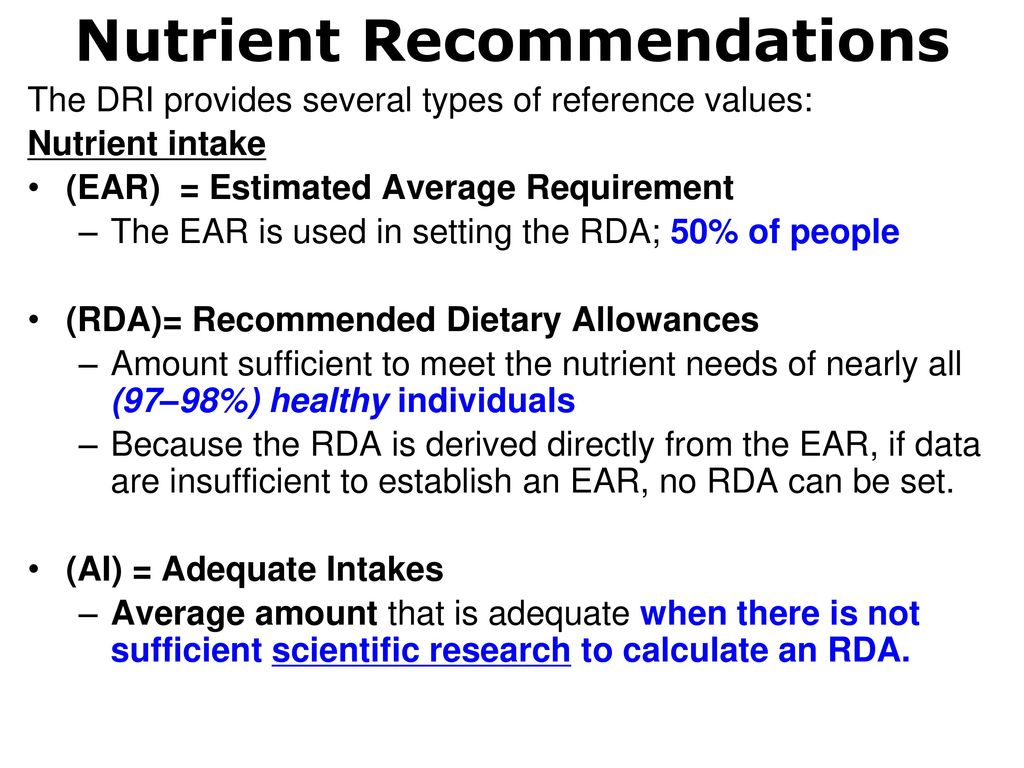



Dietary Reference Intakes Ppt Download




Aquatic Biodiversity Enhances Multiple Nutritional Benefits To Humans Biorxiv
About Press Copyright Contact us Creators Advertise Developers Terms Privacy Policy & Safety How works Test new features Press Copyright Contact us CreatorsAbstract The new Dietary Reference Intakes (DRIs) are a set of four nutrientbased reference values that replace the former Recommended Dietary Allowances (RDAs) in the United States and Recommended Nutrient Intakes (RNIs) in CanadaThe DRIs are a set of reference values (eg Estimated Average Intake – EAR, Recommended Dietary Allowance – RDA, Upper Limit – UL and Adequate Intake – AI) for many nutrients and are developed jointly by various US and Canadian government agencies that include Health Canada, National Institutes of Health, Centers for Disease Control
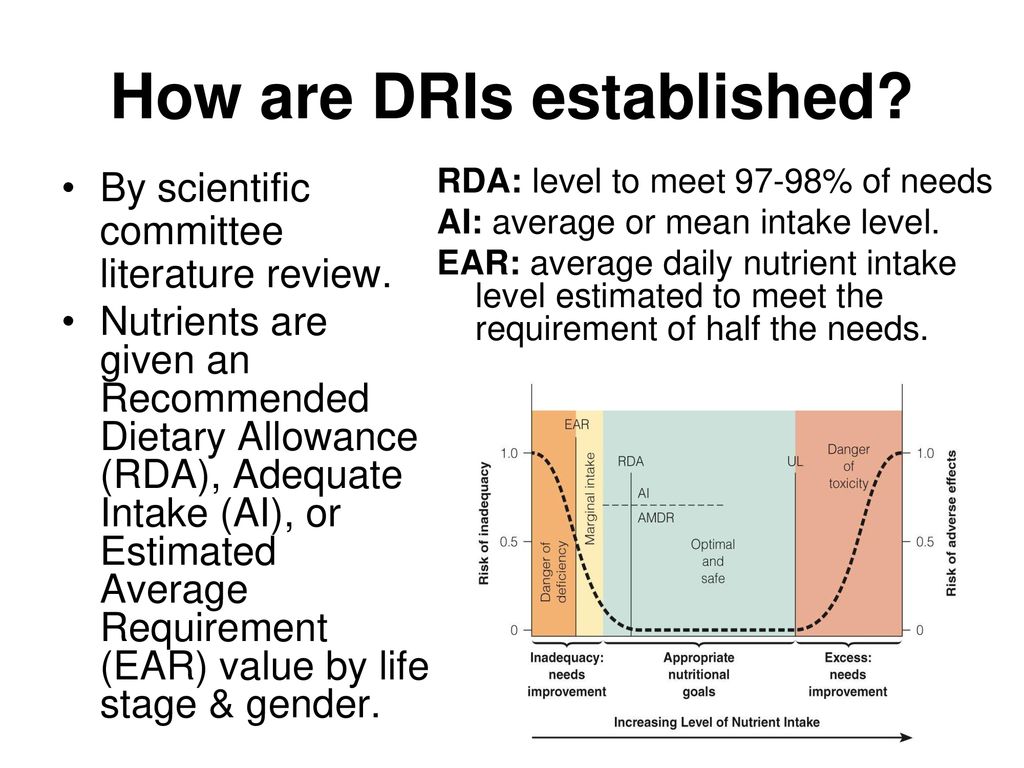



Dietary Reference Intakes Ppt Download
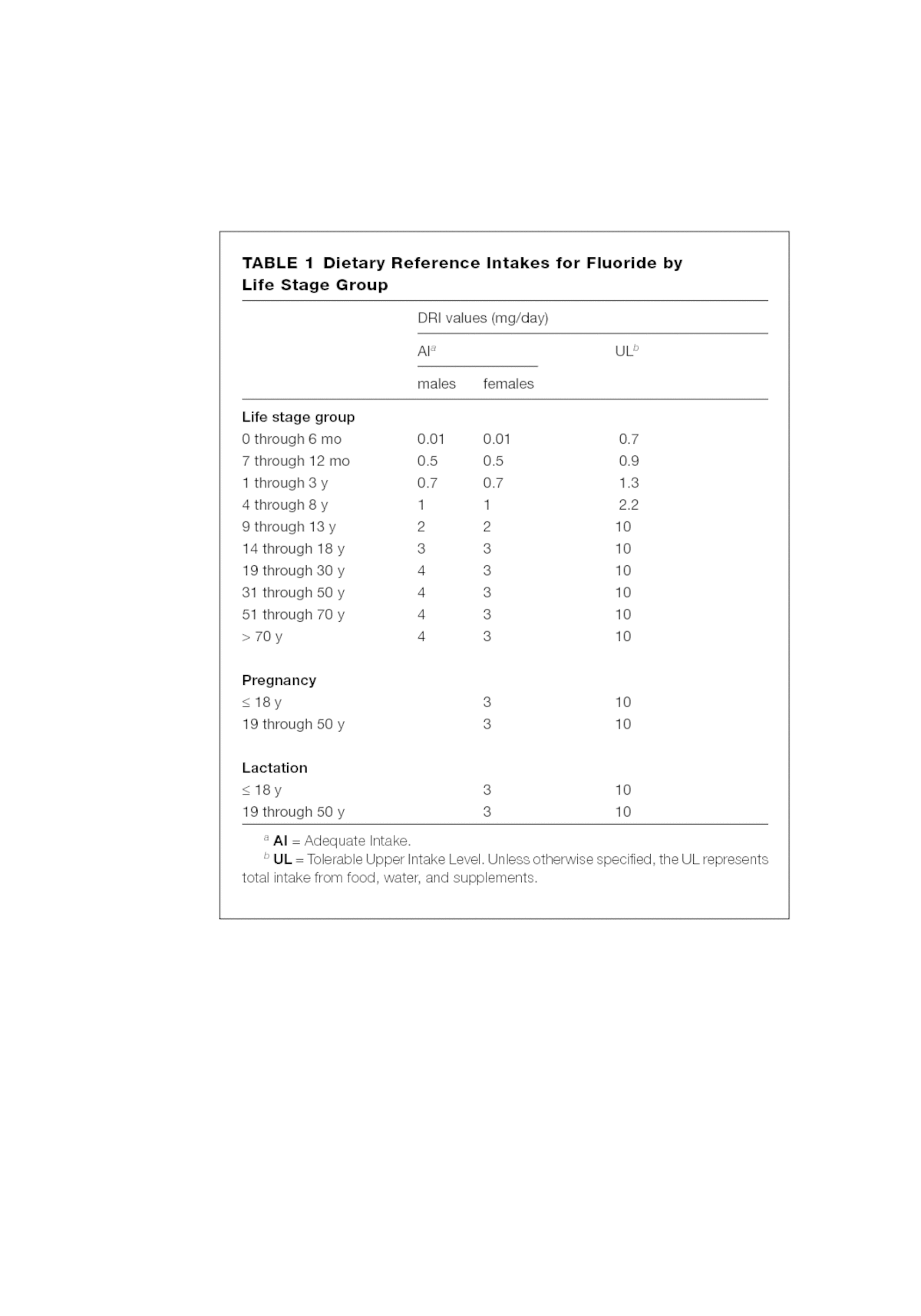



Reference Daily Intake Chart Bambu
Recommended Dietary Allowance (RDA) vs Daily Value (DV) In general, the more calories you consume, the more vitamins and minerals you will need Daily Values (DVs) are based on the caloric intake 2,000 Calories per day, so if you consume, for example, 3,000 Calories per day, your vitamin and mineral requirements will be 15 times as high as the Daily Values listed on the NutritionIf that were the case, the abbreviation would be MDI " Maximum Daily Intake" and MDA "Maximum Daily"Dietary Reference Intakes" (DRI) is an umbrella term for four reference values Estimated Average Requirements (EAR) Average daily intake levels for nutrients estimated to meet the needs of 50 percent of the target group Used in nutrition research and policymaking EARs form the basis for which RDA values are set




Chapter 2 Nutrition Tools Standards And Guidelines Nutrition Concepts Controversies 12e Sizer Whitney Slideshow And Powerpoint Viewer Learning Objectives Explain How Rda Ai Dv And




Pdf Dietary Recommendations For Vitamin D A Critical Need For Functional End Points To Establish An Estimated Average Requirement1
Jan 06, 21 · Dietary fiber — found mainly in fruits, vegetables, whole grains and legumes — is probably best known for its ability to prevent or relieve constipation But foods containing fiber can provide other health benefits as well, such as helping to maintain a healthy weight and lowering your risk of diabetes, heart disease and some types of cancerJul 14, 08 · RDA and DRI What they stand for and why they're important RDA Stands for recommended dietary allowance and is the basis for the percent daily values you see on nutrition and supplement labels"naturallyderived" versus "100% natural";
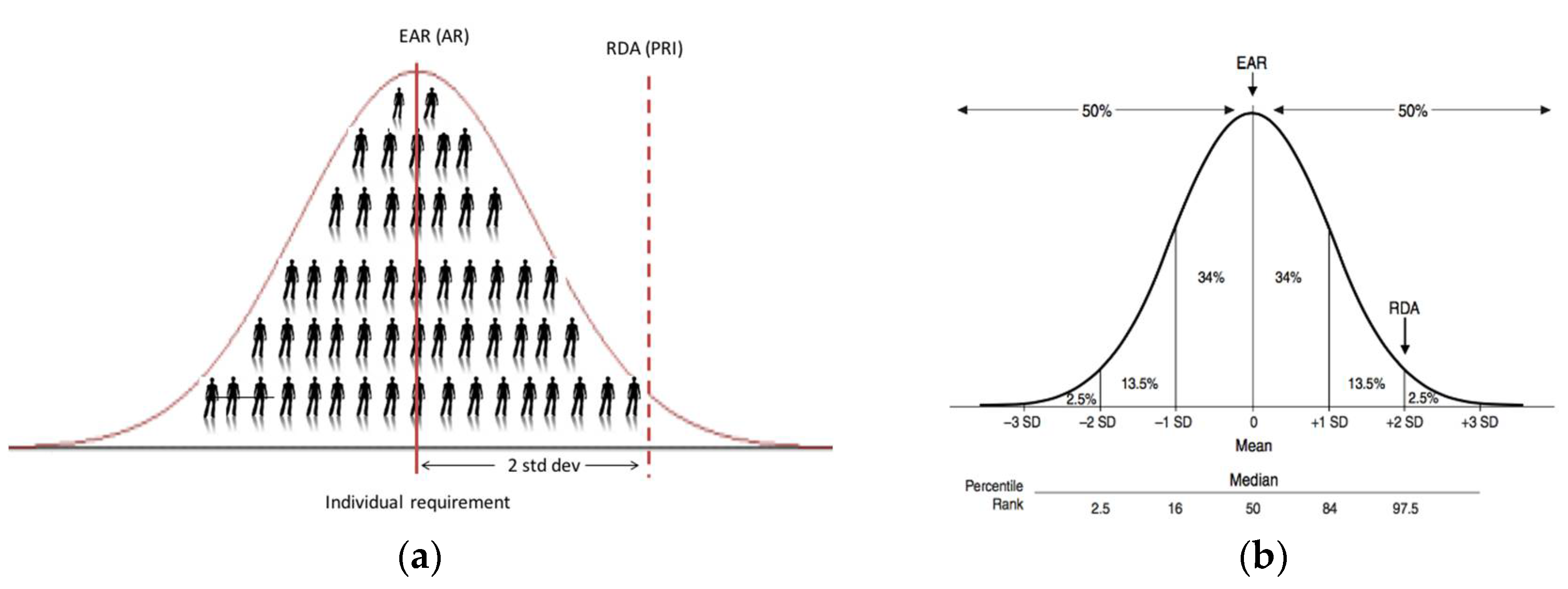



Nutrients Free Full Text Vitamin D Requirements For The Future Lessons Learned And Charting A Path Forward Html
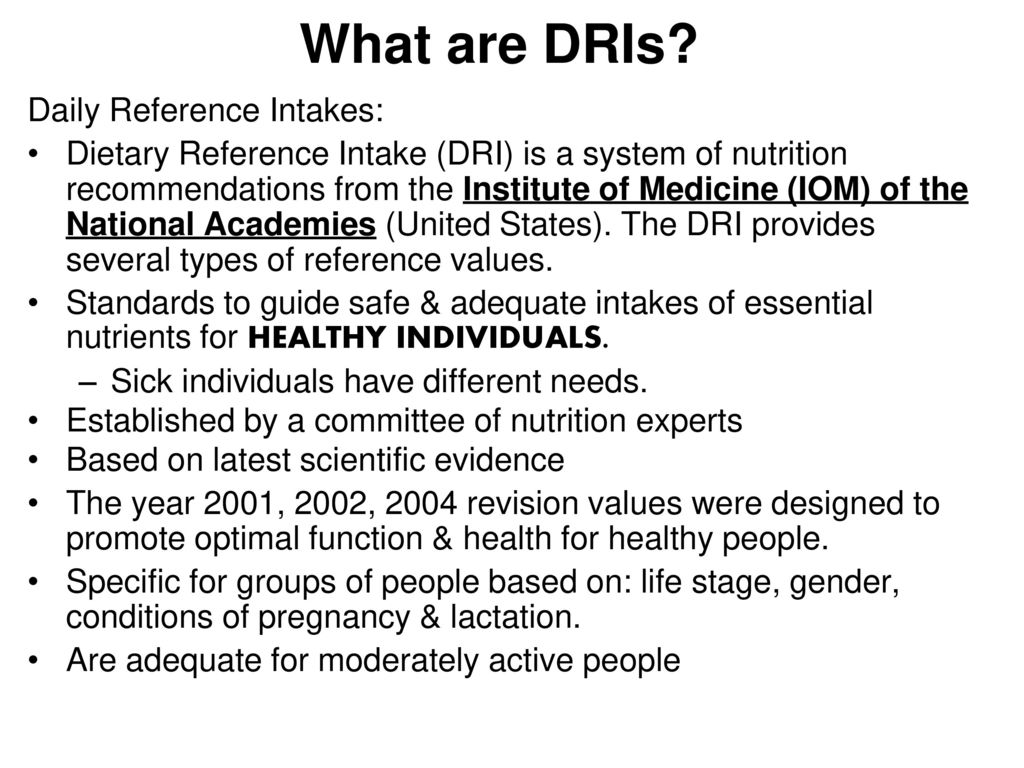



Dietary Reference Intakes Ppt Download
Aug 16, 11 · One large part of misinformation is the RDI "Recommended Daily Intake" and RDA " Recommended Daily Allowance" Most people believe that this is the most or highest levels of any vitamins and minerals that can be taken safely This would be completely wrong!!Recommended Dietary Allowance (RDA) An RDA is the suggested amount of a nutrient a person should get through diet every day This average daily amount will meet the requirements of almost all healthy people of a certain age, sex, or life stageMar 30, · DRI is the general term for a set of reference values used for planning and assessing nutrient intakes of healthy people These values, which vary by age and sex, include Recommended Dietary Allowance (RDA) Average daily level of intake sufficient to meet the nutrient requirements of nearly all (97%–98%) healthy individuals;




Manganese Dietary Reference Intakes The Essential Guide To Nutrient Requirements The National Academies Press




By Hatim Jaber Md Mph Jbcm Phd Ppt Download
DRI is the general term for a set of reference values used to plan and assess nutrient intakes of healthy people These values, which vary by age and sex, include Recommended Dietary Allowance (RDA) average daily level of intake sufficient to meet the nutrient requirements of nearly all (97%98%) healthy peopleFrom 1941 to 19, the IOM's FNB released the RDAs The RDAs are a single set of nutrientspecific values During deliberations in the mid1990s, the FNB decided to replace this single set of values with multiple sets of values, including the EAR, RDA, AI and UL for designated age groups, physiologic states (for example, pregnancy), and by sex These values are collectively referred toJun 09, 21 · EAR values are then used to determine the Recommended Dietary Allowance (RDA) values for each nutrient Recommended Dietary Allowances (RDA) Once the EAR for a nutrient has been established, the RDA can be mathematically determined While the EAR is set at a point that meets the needs of half the population, RDA values are set to meet the




Key Bone Building Nutrients An Overview Sound Health And Lasting Wealth




Aquatic Biodiversity Enhances Multiple Nutritional Benefits To Humans Biorxiv
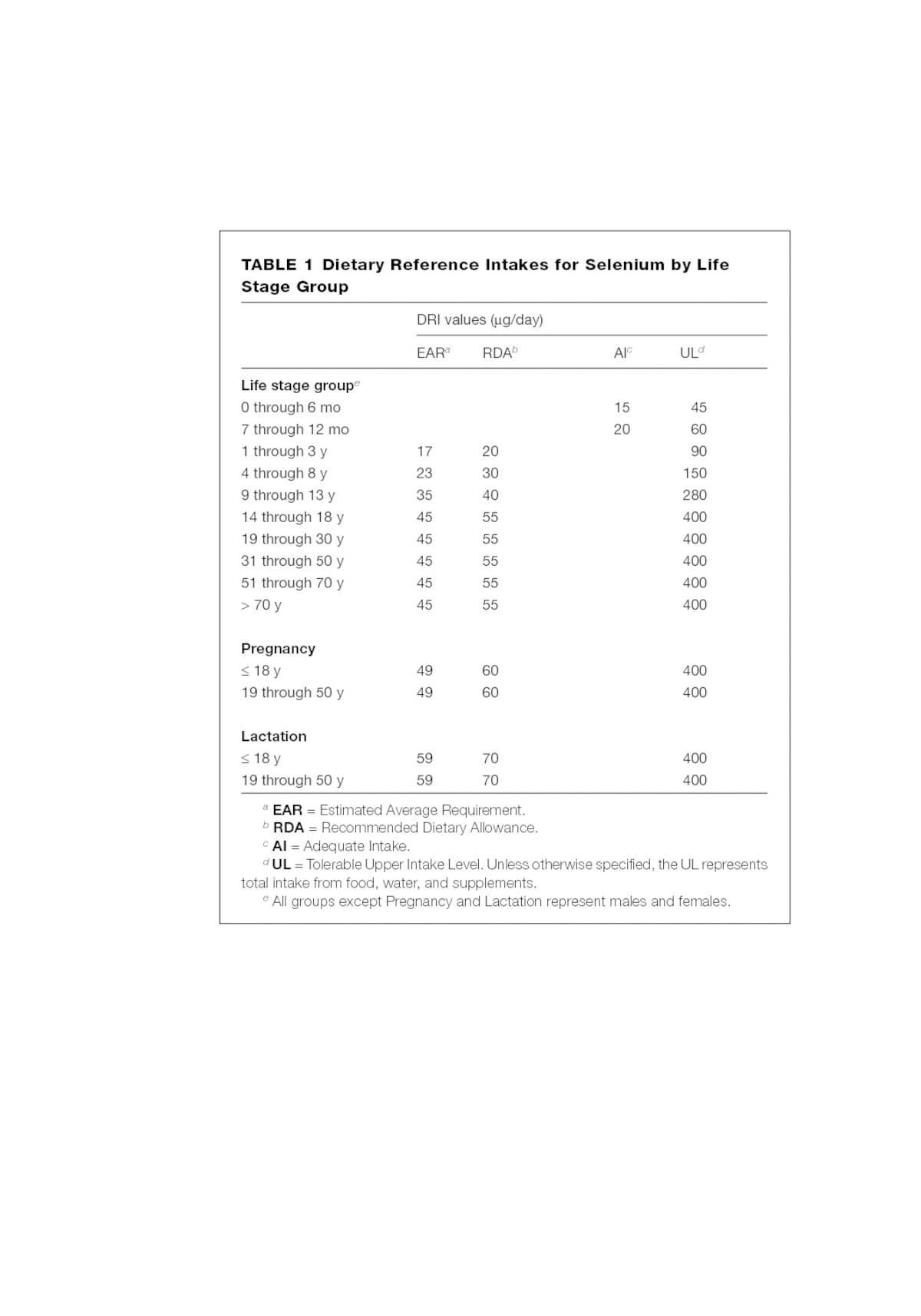



Selenium Dietary Reference Intakes The Essential Guide To Nutrient Requirements The National Academies Press




Rda Protein
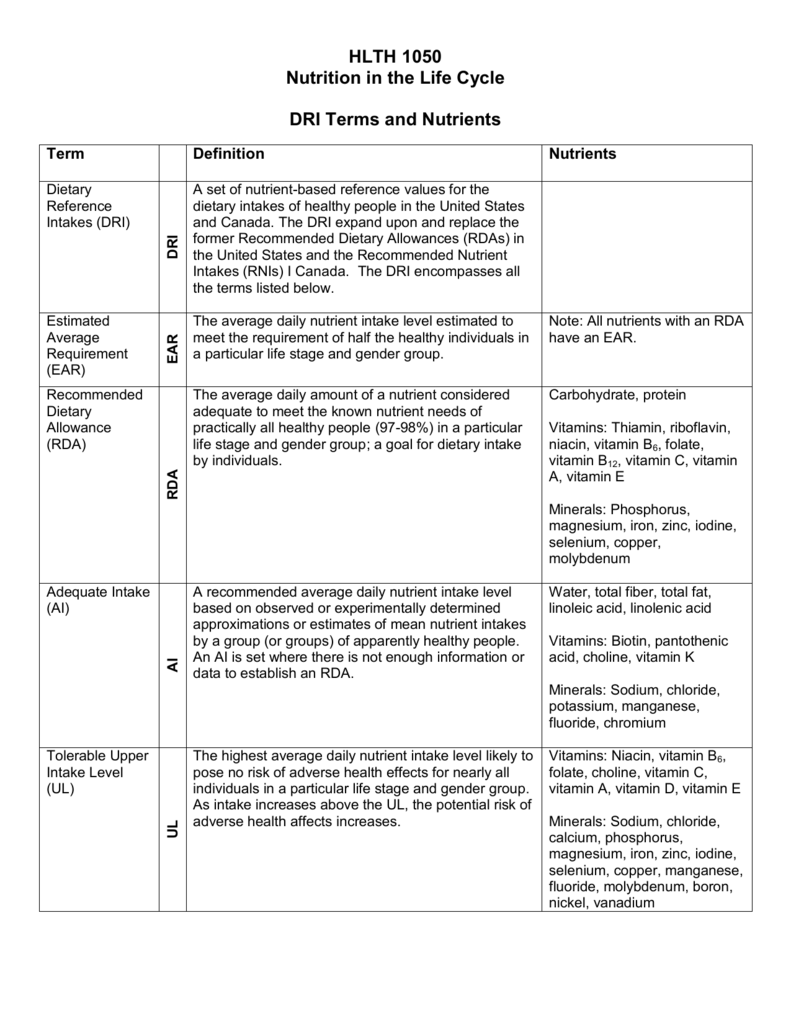



Unit 1 Hlth 1050 Dri Terms




Rda Protein
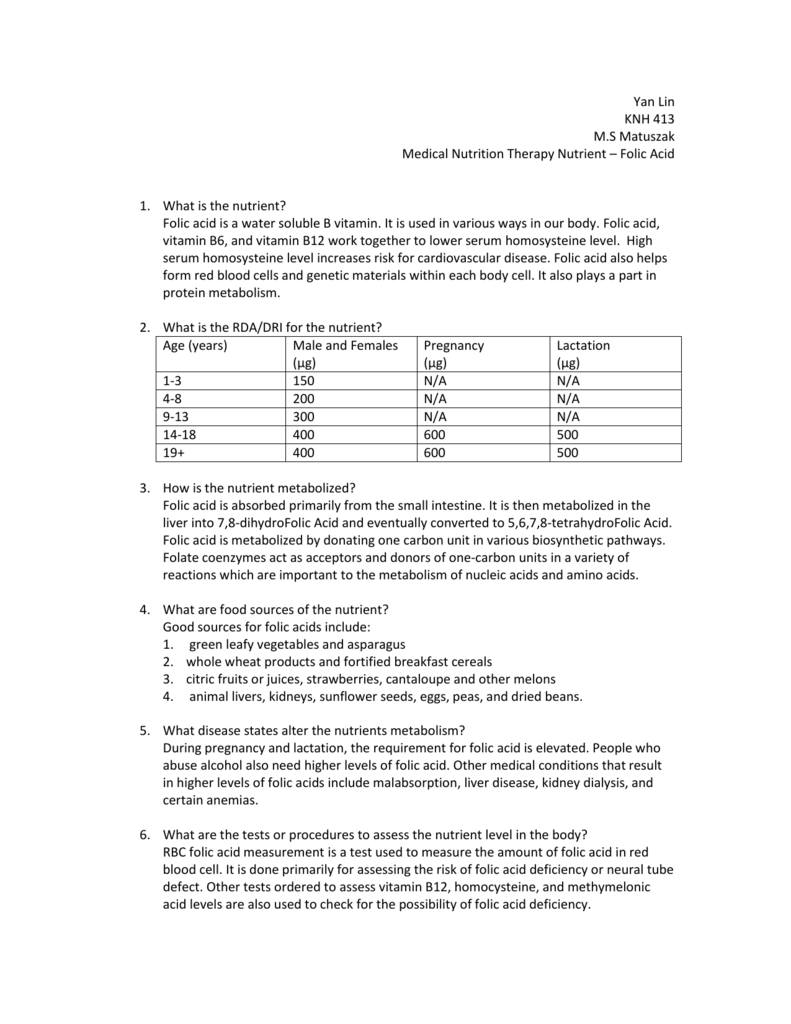



Folic Acid




3 2 Nutrition Tools Establishing Nutrient Intakes Youtube




34 Rda Food Label Labels Design Ideas




Dietary Reference Intakes Dris Recommended Dietary Allowances Rda Download Table




Ntr Exam 1 Prep Notes To Study For Exam 1 Studocu




Defining Nutrient Requirements Dietary Reference Intakes Nutrition Science And Everyday Application




Nutrition Exam 1 Study Guide Nep 1034 Mizzou Studocu




Chapter 2 Nutrition Tools Standards And Guidelines Nutrition Concepts Controversies 12e Sizer Whitney Slideshow And Powerpoint Viewer Learning Objectives Explain How Rda Ai Dv And
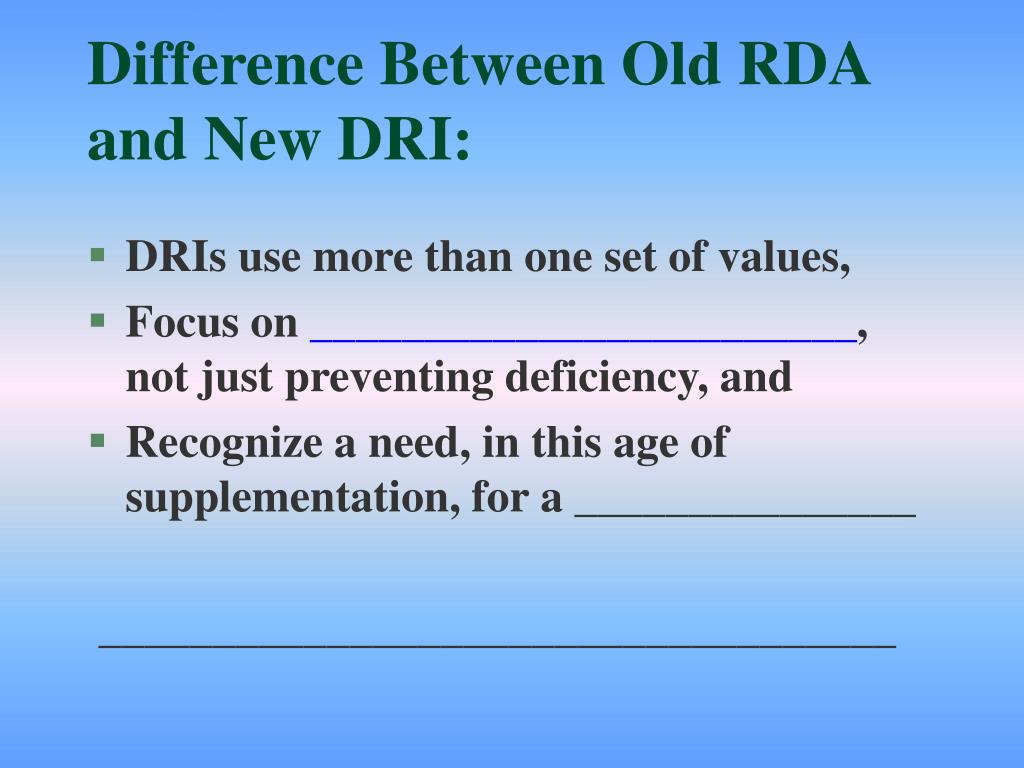



Ppt Nutritional Standards Nfsc 100 Powerpoint Presentation Free Download Id 679




The Food Choice Map As A Diet Assessment Tool For Older Adults Semantic Scholar
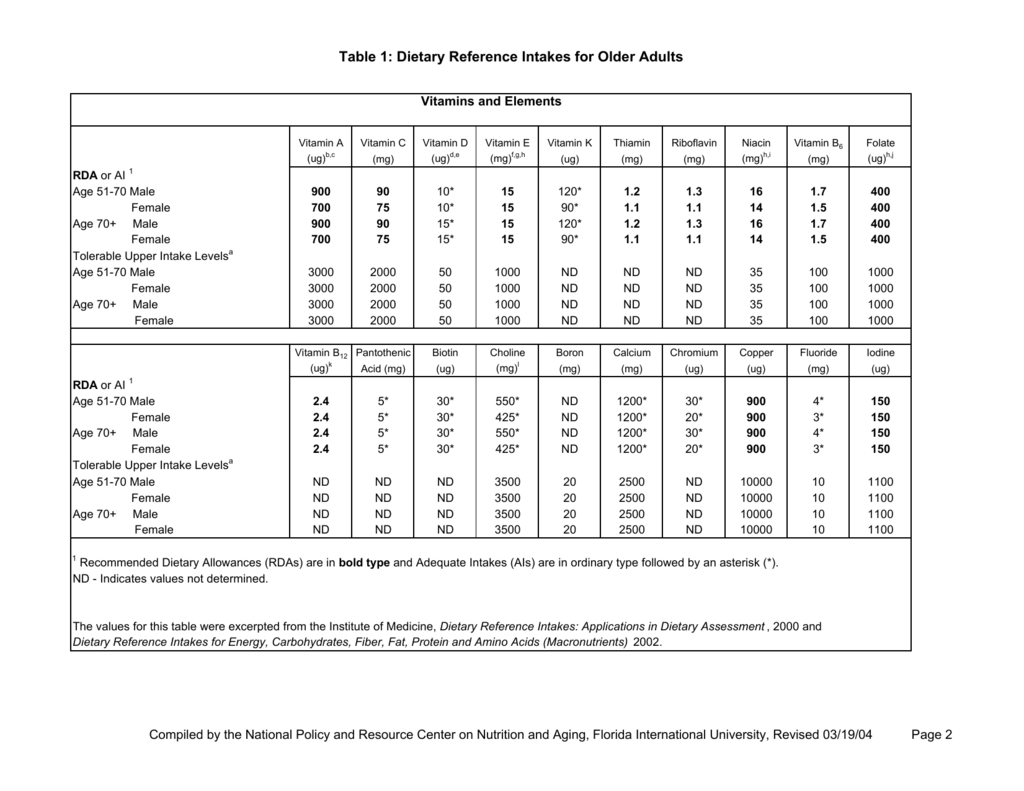



Dri Table One For Web 9 13 04




Biotin Dietary Reference Intakes The Essential Guide To Nutrient Requirements The National Academies Press




Test Bank For Nutrition And You 4th Edition By Blake Ibsn By Oginz Issuu




Quiz Worksheet Types Of Dietary Reference Intakes Study Com




Pdf Dietary Variety Increases The Probability Of Nutrient Adequacy Among Adults




Appendix E 3 1 Health Gov




Pdf Dietary Reference Intake Dri Value For Dietary Polyphenols Are We Heading In The Right Direction




Comprehensive Review Of Nutritional Components For Occupational Health Nurses Part 1 Semantic Scholar
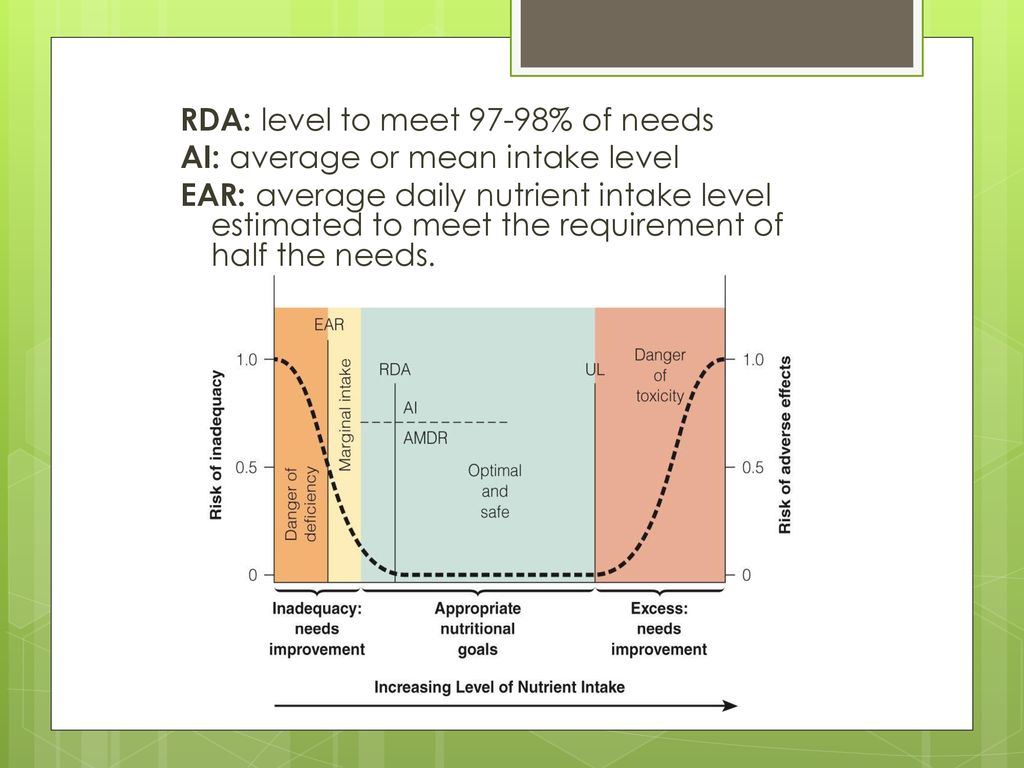



Dietary Reference Intakes Dris Ppt Download




Defining Nutrient Requirements Dietary Reference Intakes Nutrition Science And Everyday Application




Protein A Nutrient In Focus




Magnesium Medical Nutrition Therapy Manual



Plos One Potential Impacts Of Climate Related Decline Of Seafood Harvest On Nutritional Status Of Coastal First Nations In British Columbia Canada




Bgsu Fn4350 5350 Instructions For Creating A Diet For A Pregnant Woman Assignment Low Fat Diet Foods




Slides Show




Det2 Schrumfbarer Polyethylenfilm Google Patents




Pdf Nutritional Status Of Children 24 60 Months Attending Early Child Development Centres In A Semi Rural Community In South Africa Semantic Scholar
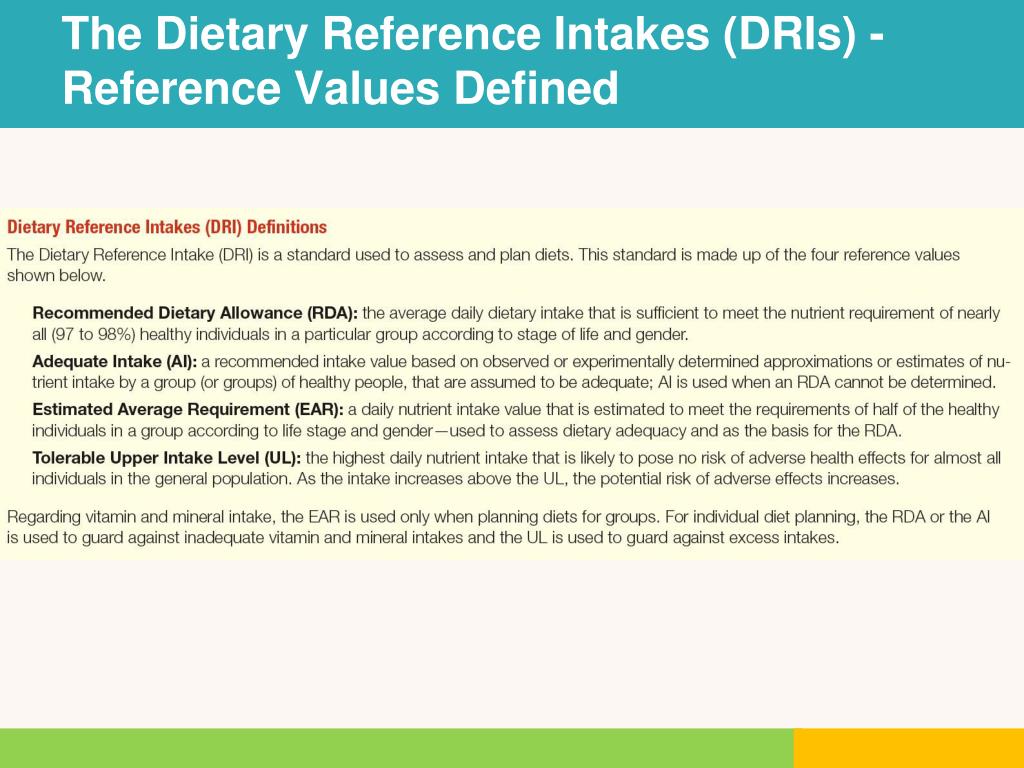



What Is The Definition Of Dietary Reference Values
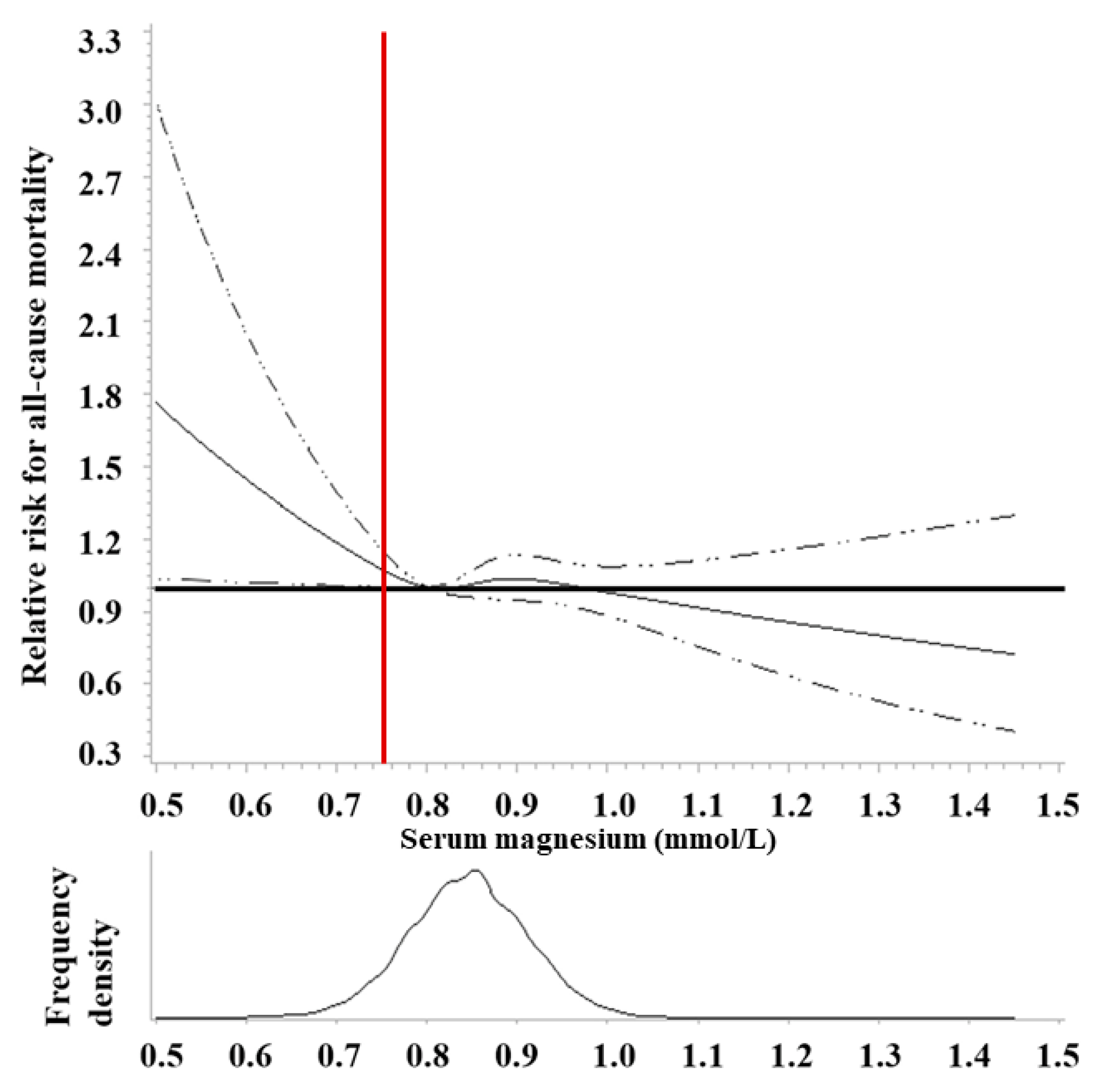



Nutrients Free Full Text Beyond Nutrient Deficiency Opportunities To Improve Nutritional Status And Promote Health Modernizing Dris And Supplementation Recommendations Html
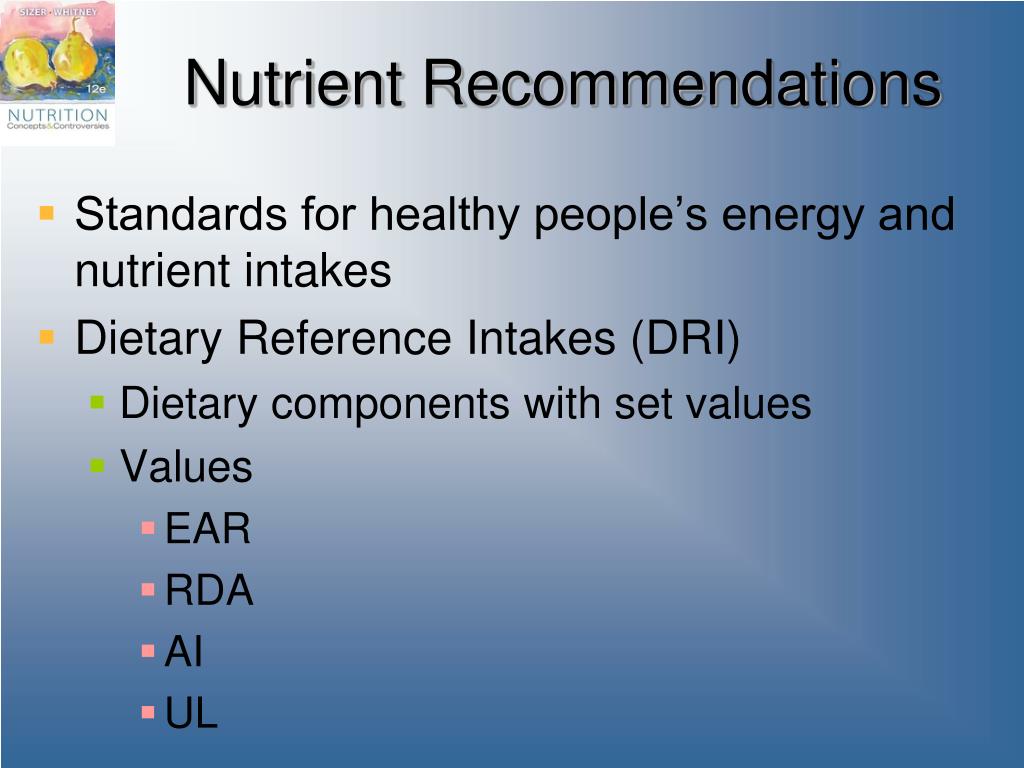



Ppt Chapter 2 Nutrition Tools Standards And Guidelines Powerpoint Presentation Id




Dietary Intake Weight Gain And Birth Outcomes Of Physically Active Pregnant Women A Pilot Study




Unit 2 Nutritional Tools Standards And Guidelines Studocu
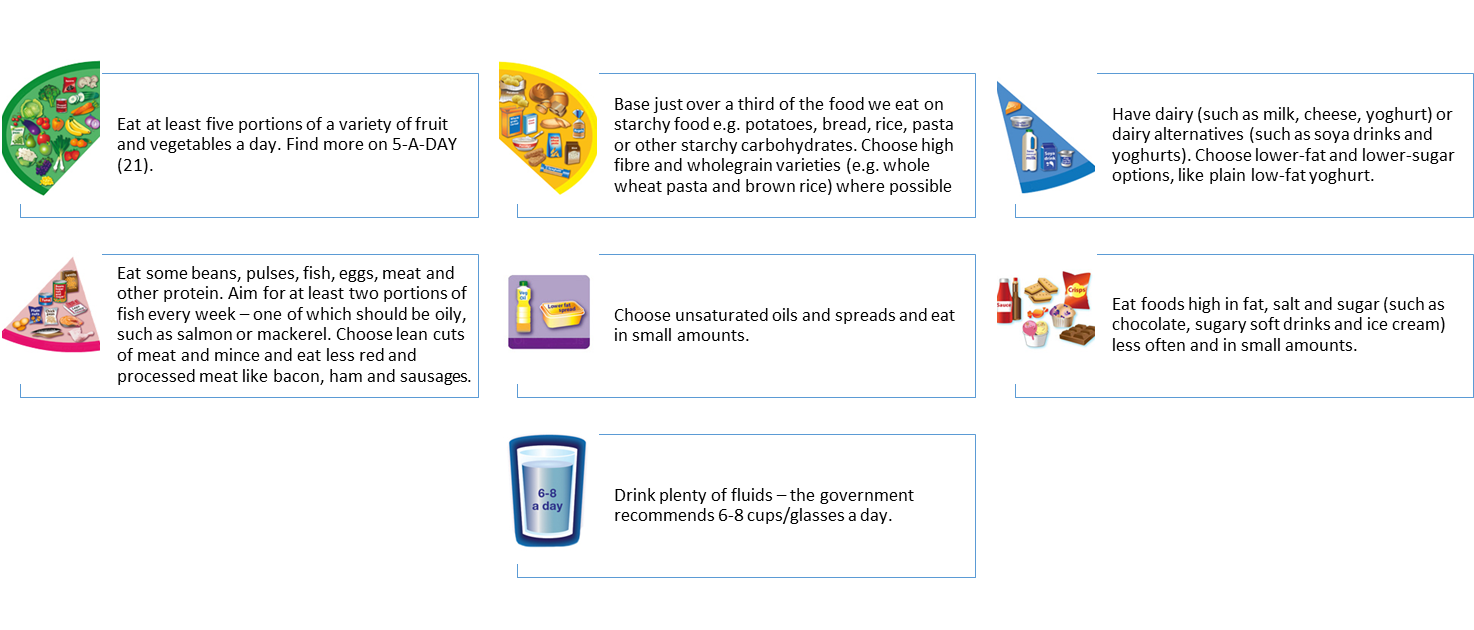



Dapa Measurement Toolkit




Pdf Assessment Of Vitamin B 6 Estimated Average Requirement And Recommended Dietary Allowance For Adolescents Aged 13 15 Years Using Vitamin B 6 Intake Nutritional Status And Anthropometry
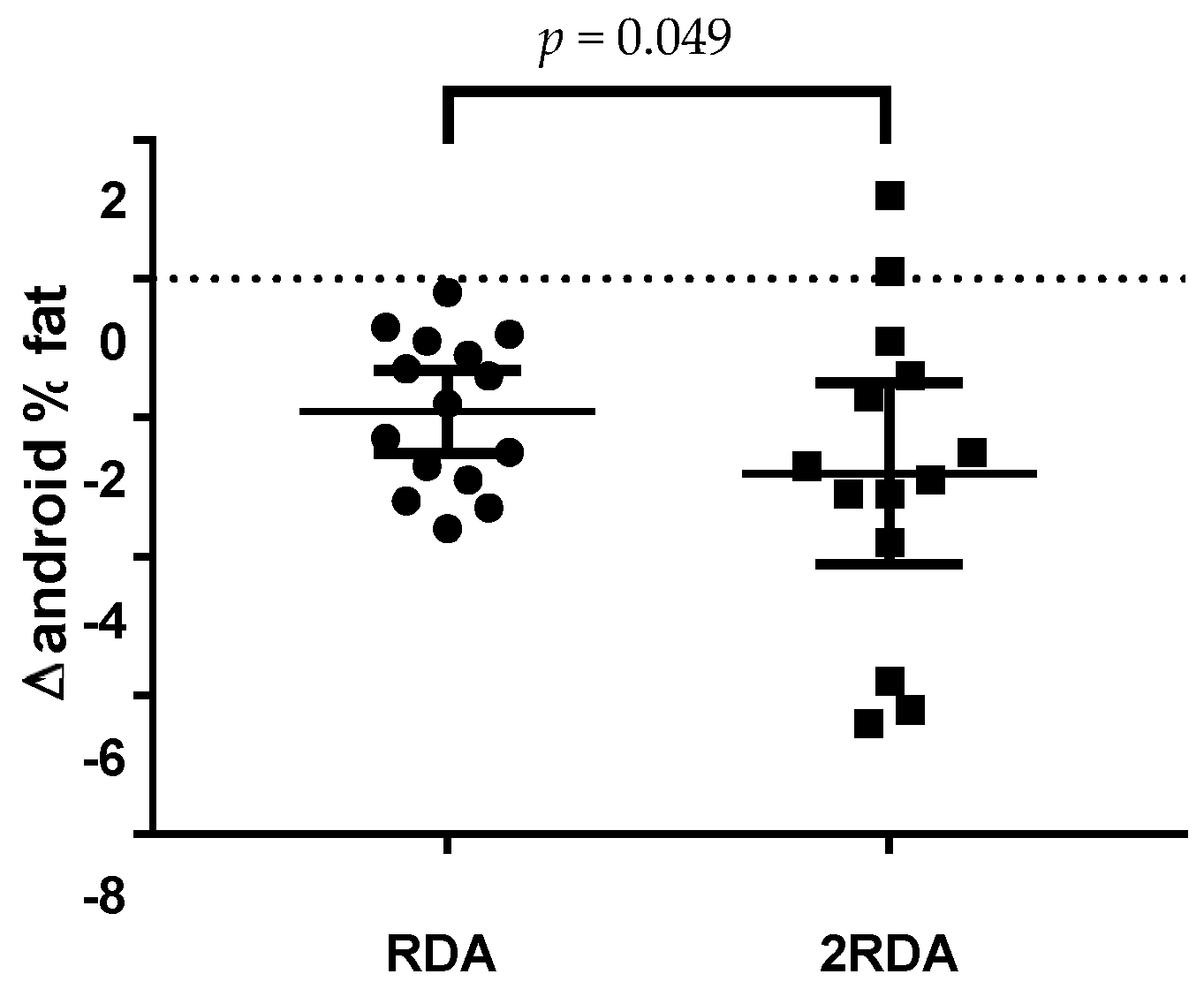



35 The Rda For Carbohydrate On The Nutrition Facts Label Represents Labels Database




Practice Paper Of The American Dietetic Association Using The Dietary Reference Intakes Journal Of The American Dietetic Association




Foodosage Nutrition Calculator Calculate Your Individual Rdas And Perfect Diet
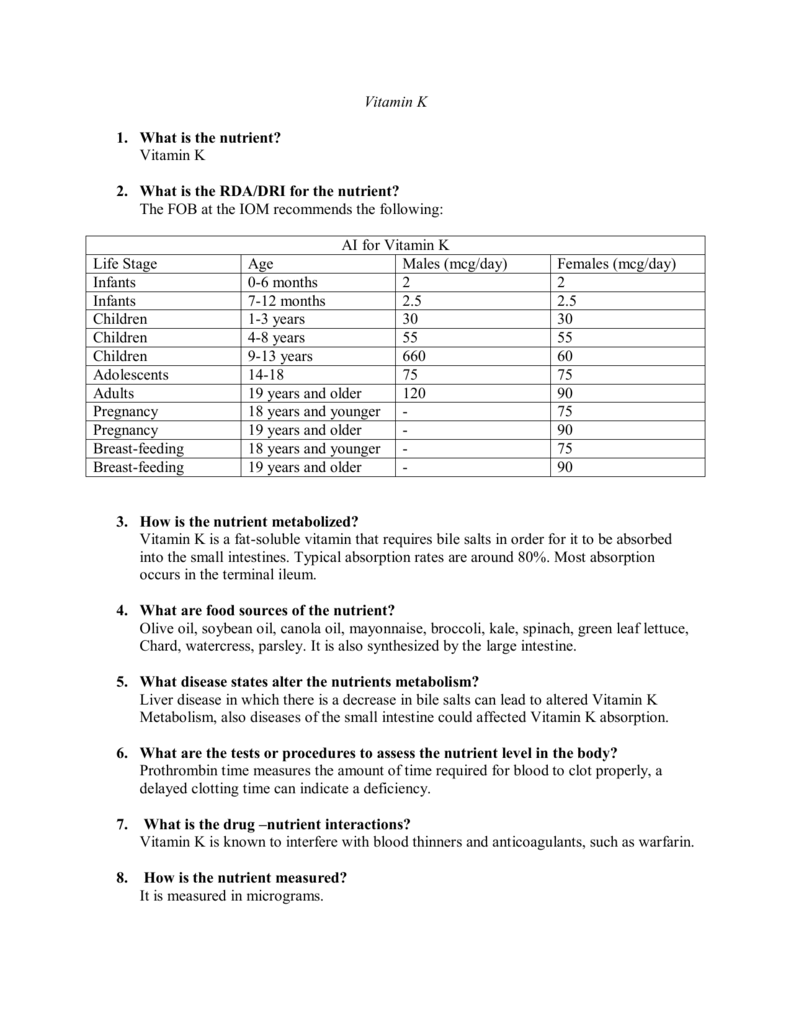



Vitamin K 1 What Is The Nutrient Vitamin K 2 What Is The Rda Dri




Nutrition Wellness For Life 5th Edition Page 101 113 Of 704
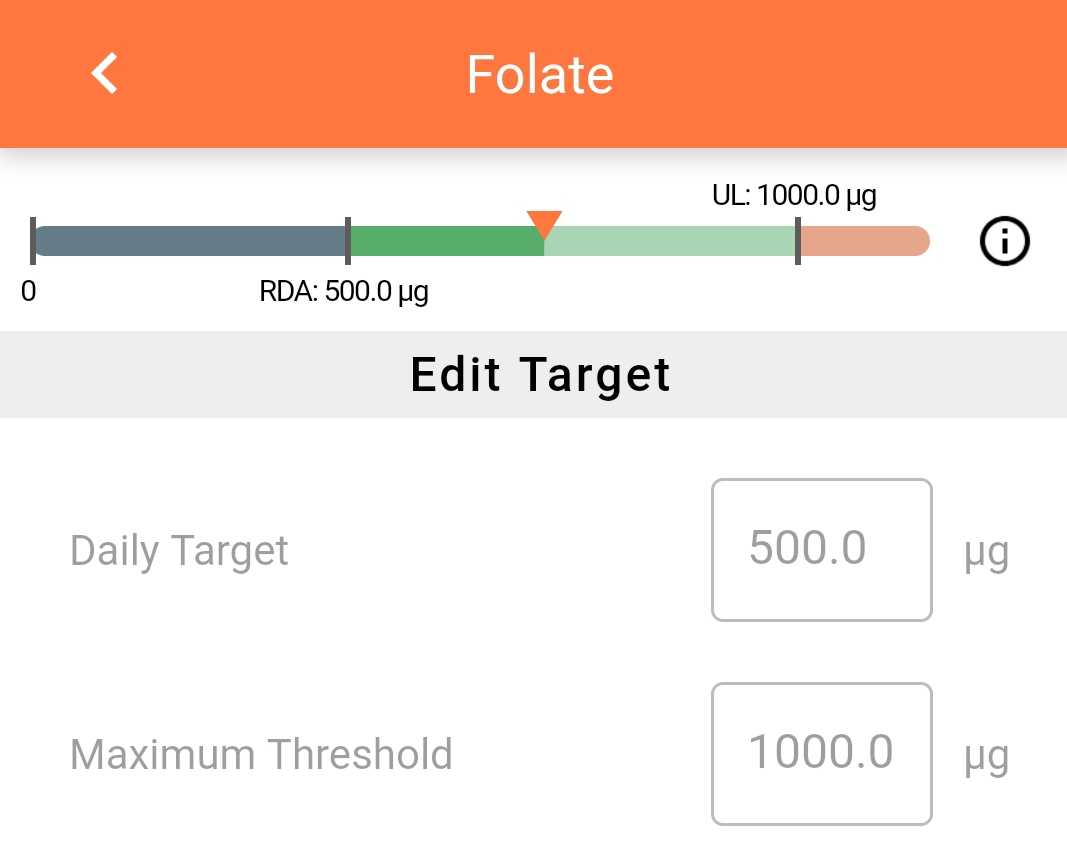



Dietary Reference Intakes Dris Cronometer




Chapter 2 Lecture Notes 2 Hnsc 10 Brooklyn College Studocu




Nutrition Tools Standards And Guidelines Ppt Download




Nutrition In Infancy Childhood And Youth




Reference Daily Intake Chart Bambu



Plos One Potential Impacts Of Climate Related Decline Of Seafood Harvest On Nutritional Status Of Coastal First Nations In British Columbia Canada




Recommended Dietary Reference Intakes Dri Usual Dietary Daily Download Table




A S P E N Position Paper Vanek 12 Nutrition In Clinical Practice Wiley Online Library




Ppt Nutrition Powerpoint Presentation Free Download Id
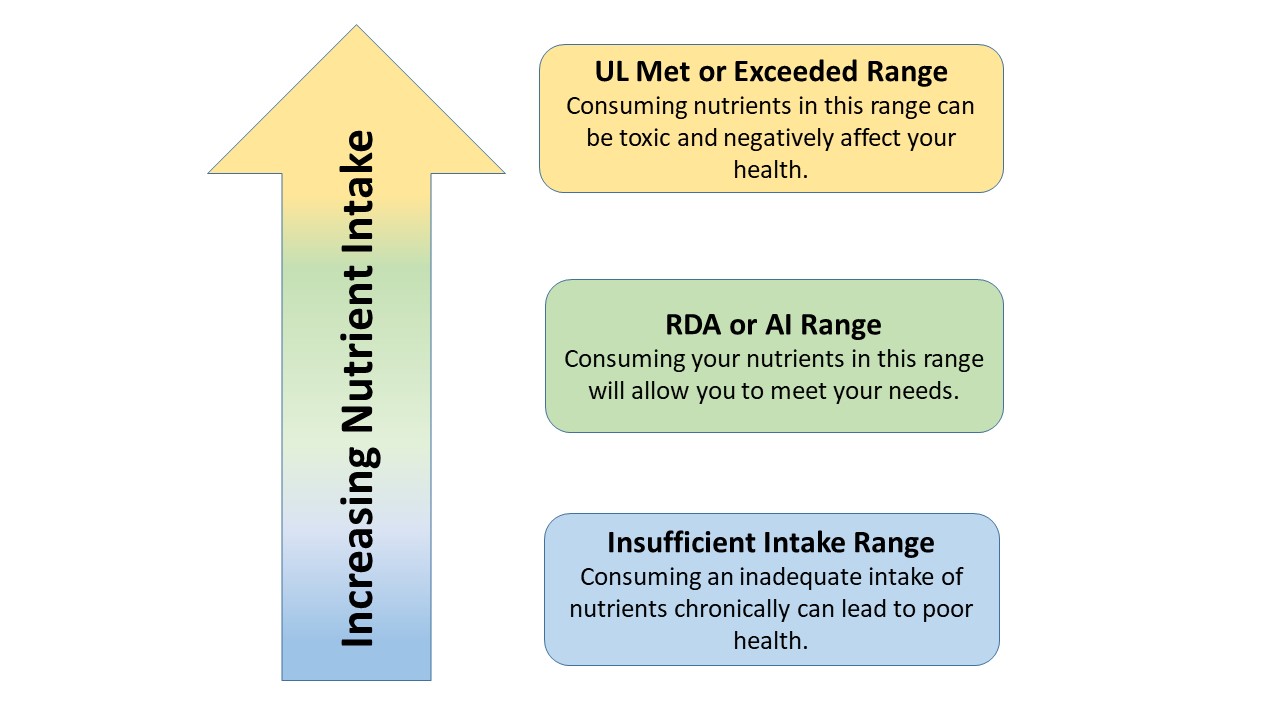



1 15 Understanding Dietary Reference Intakes Medicine Libretexts




Communication Kit Rda




Chapter 2 Nutrition Tools Standards And Guidelines Nutrition Concepts Controversies 12e Sizer Whitney Slideshow And Powerpoint Viewer Learning Objectives Explain How Rda Ai Dv And




Dietary Intakes Of Women S Health Initiative Long Life Study Participants Falls Short Of The Dietary Reference Intakes Journal Of The Academy Of Nutrition And Dietetics
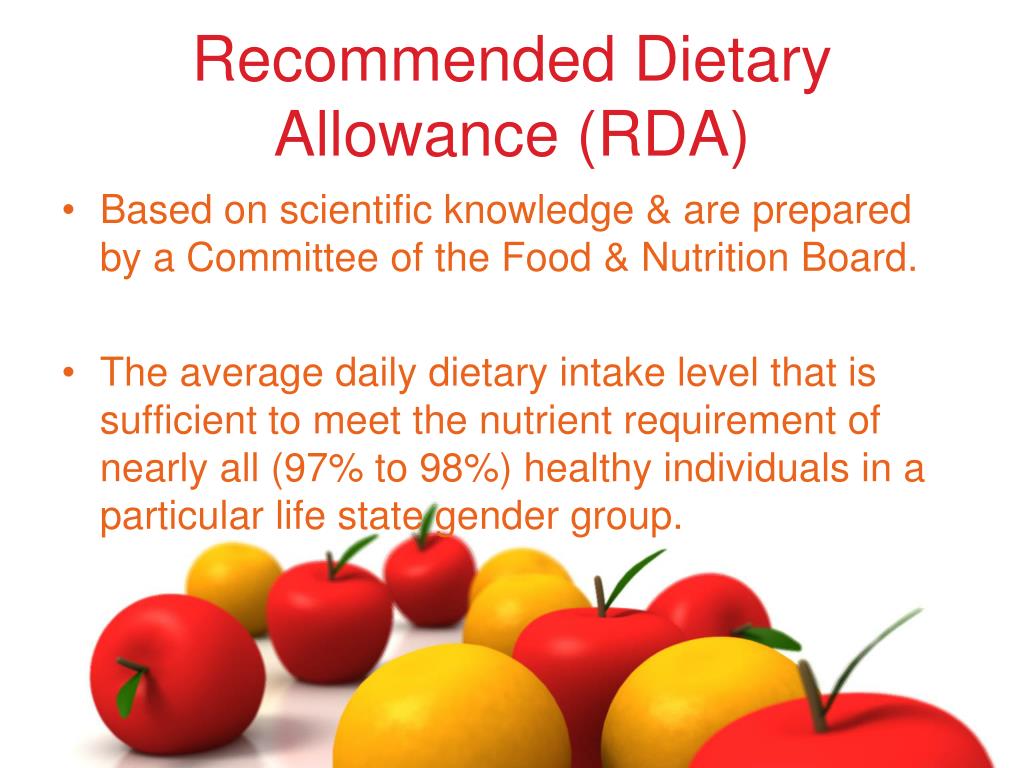



Ppt Standards For Nutrient Intake Powerpoint Presentation Free Download Id



Cohort Profile The Dutch Perined Lifelines Birth Cohort




Slides Show



0 件のコメント:
コメントを投稿